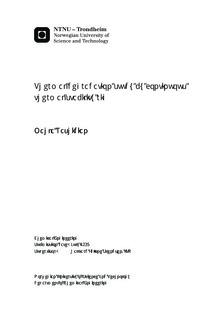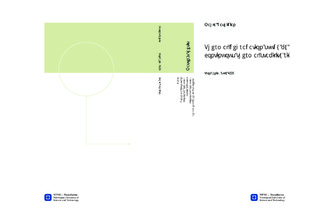| dc.contributor.advisor | Svendsen, Hallvard Fjøsne | nb_NO |
| dc.contributor.author | Rashidian, Mahla | nb_NO |
| dc.date.accessioned | 2014-12-19T13:24:22Z | |
| dc.date.available | 2014-12-19T13:24:22Z | |
| dc.date.created | 2013-10-09 | nb_NO |
| dc.date.issued | 2013 | nb_NO |
| dc.identifier | 655063 | nb_NO |
| dc.identifier | ntnudaim:9863 | nb_NO |
| dc.identifier.uri | http://hdl.handle.net/11250/248572 | |
| dc.description.abstract | This investigation was done at NTNU and together with Statoil research and development department in Rotvoll, Trondheim to facilitate a new semi dynamic amine thermal degradation rig.This study was an initial attempt to investigate semi dynamic thermal stability rig as an alternative to thermal degradation study. The major purposes are: (1) to study MEA and MDEA thermal degradation by thermal stability rig apparatus which is designed by Statoil. (2) to demonstrate the result differences between the new and conventional experimental method. MEA and MDEA were selected in this study due to have more available literature data in amine based absorption process. The loaded liquid was circulated through the pipe from the cold stream to the hot stream. There is no analytical method was connected to the rig therefore a regular sample was taken every week and sent to SINTEF analytical lab to identify degradation products.Residence time of solution in high temperature zone also was calculated as an important factor in thermal degradation investigation. Different authors have been provided to understand: the background, the experimental set up, the analytical method to describe the degradation products, data interpretation and the mechanism of the degradation.Based on analytical results, it seems that only small portion of MEA and MDEA were degraded. It showed that the elapsed time was not enough to observe degradation in a significant amount. Metal qualification tests showed low metal concentration in solutions and generally very little corrosiveness effect. However, few degradation products were reported in this study the most probably degradation mechanism is estimated similar to suggested degradation pathway by Davis (2009). More works are required in future to better interpret the new thermal stability rig. | nb_NO |
| dc.language | eng | nb_NO |
| dc.publisher | Institutt for kjemisk prosessteknologi | nb_NO |
| dc.title | Thermal degradation study by continuous thermal stability rig | nb_NO |
| dc.type | Master thesis | nb_NO |
| dc.source.pagenumber | 72 | nb_NO |
| dc.contributor.department | Norges teknisk-naturvitenskapelige universitet, Fakultet for naturvitenskap og teknologi, Institutt for kjemisk prosessteknologi | nb_NO |

